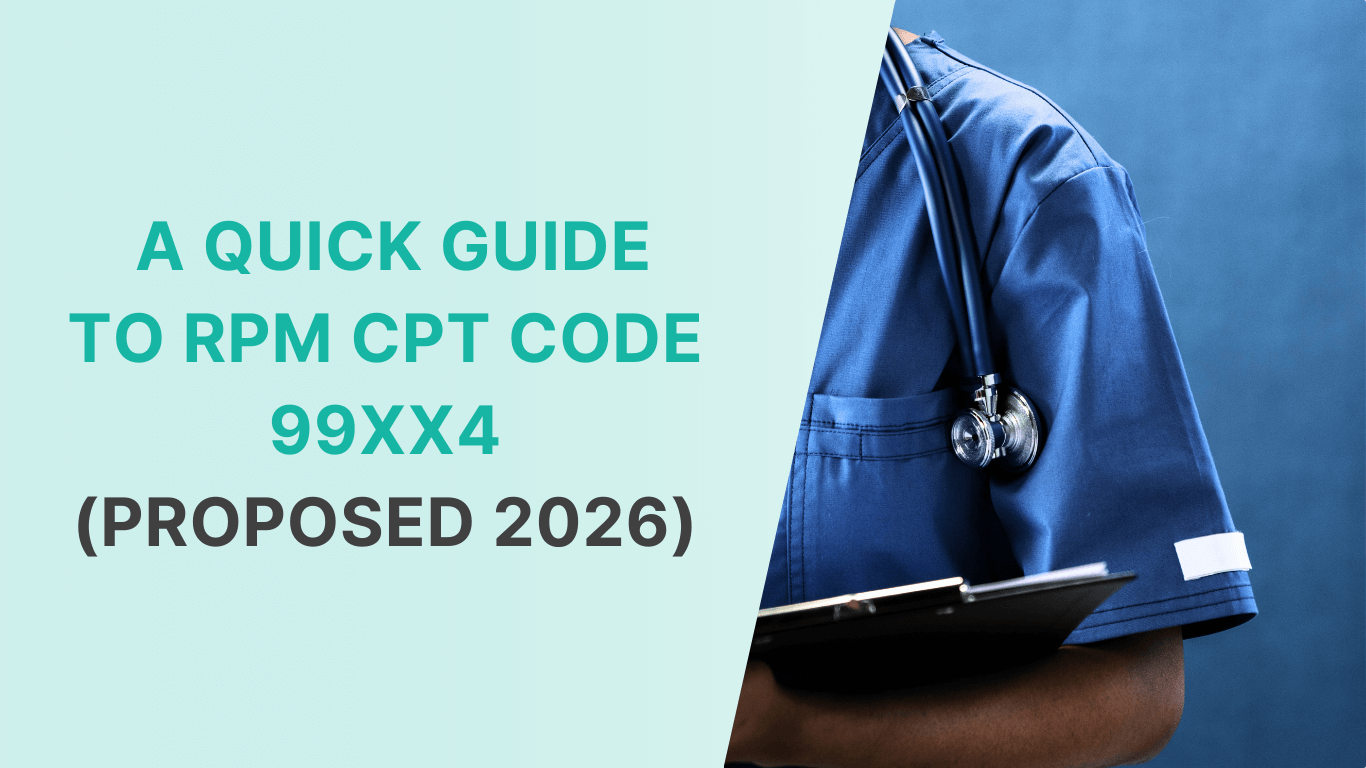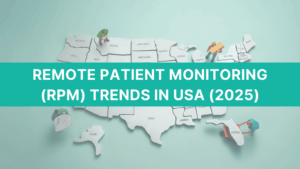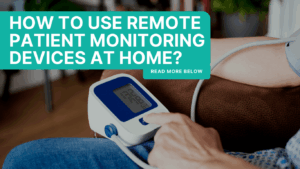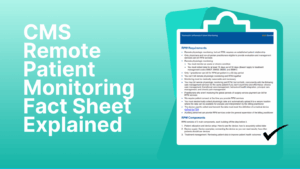This guide explains CPT Code 99XX4 in detail. Right now, this code is proposed, not final. It is part of the 2026 Physician Fee Schedule Proposed Rule by Centers for Medicare & Medicaid Services.
CPT Code 99XX4 is meant for device supply and data transmission when a patient uses a Remote Patient Monitoring (RPM) device for 2–15 days in a 30-day period. Right now, only a code for 16–30 days (CPT 99454) exists, but 99XX4 would allow billing when monitoring is less frequent.
If finalized, 99XX4 would be reimbursed at the same rate as the existing 16‑day code (99454). This is a big change. It gives doctors more flexibility and makes it easier to bill for patients who don’t record data every day.
2. What Does CPT Code 99XX4 Cover?
CPT Code 99XX4 is a proposed billing code for Remote Patient Monitoring (RPM). It covers the cost of device supply and data transmission when a patient uses an RPM device for 2 to 15 days in a 30-day period.
This is important because right now, providers can only bill CPT 99454, which requires 16 days or more of data each month. If a patient only records 10 or 12 days, the provider gets no payment under current rules.
With 99XX4, CMS wants to close this gap. It makes sure that providers are paid even if patients only use their device for a shorter period.
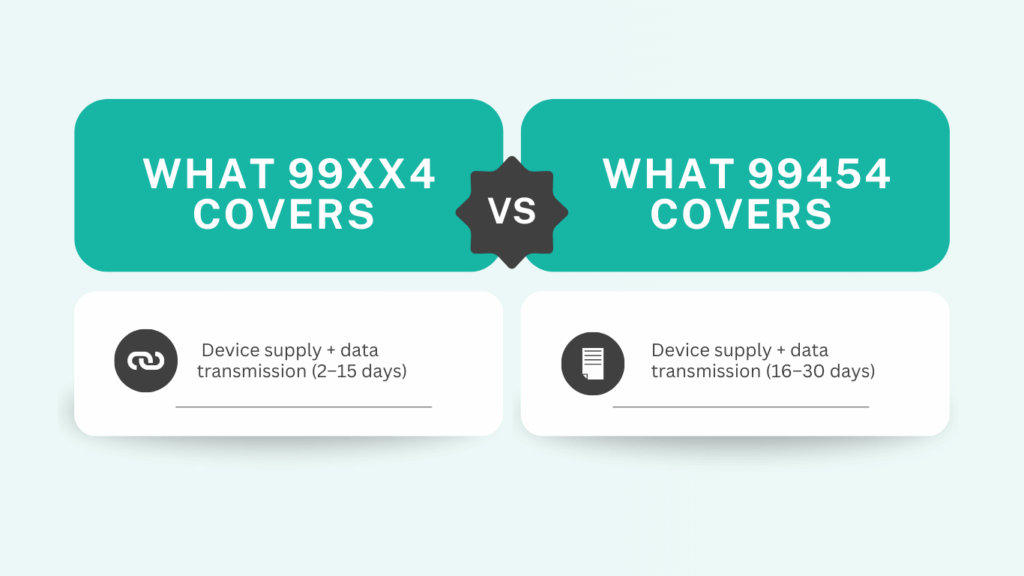
When to Use CPT Code 99XX4
CPT Code 99XX4 (if finalized) should be used when a patient uses an RPM device for 2–15 days in a 30-day period. This is different from CPT 99454, which requires at least 16 days of data in the same month.
For Example, a doctor gives a blood pressure monitor to a patient after changing medication. The patient only needs to record readings for 10 days to see if the new medicine works.
Remember: Providers should only bill 99XX4 if the device meets FDA standards, the data is collected electronically, and the use is clinically necessary.
How Is CPT Code 99XX4 Different from Other RPM Codes?
The big difference between CPT Code 99XX4 and existing Remote Patient Monitoring (RPM) codes is the number of days a device is used. Here’s a simple breakdown:
- CPT 99453: For setting up the RPM device and educating the patient. (Billed once per episode).
- CPT 99454: For device supply and data transmission 16–30 days per month.
- CPT 99XX4 (Proposed 2026): For device supply and data transmission 2–15 days per month.
- CPT 99457/99458: For treatment management services, billed when providers spend 20+ minutes reviewing and interacting with patients.
The table below shows a quick comparison of different RPM CPT Codes in 2025.
| Code | What It Covers | Days Required | Notes |
| 99453 | Initial setup + patient education | N/A | One-time |
| 99454 | Device supply & data transmission | 16–30 days | Monthly |
| 99XX4 | Device supply & data transmission (Proposed) | 2–15 days | Monthly |
| 99457/58 | Treatment management (provider time) | N/A | 20+ minutes |
How Much Reimbursement Can Providers Expect for CPT Code 99XX4?
Right now, CPT Code 99XX4 is proposed, not confirmed. That means the exact Medicare payment rate could change before it is finalized in late 2025. But CMS has made it clear in the 2026 Proposed Rule that 99XX4 will be paid at the same rate as CPT 99454. (CMS Fact Sheet)
- CPT 99454 (current): Average Medicare reimbursement is about $47–$49 per patient per month (exact rate may vary by region).
- CPT 99XX4 (proposed): Expected to reimburse at the same level.
This means providers can finally bill for shorter monitoring periods without losing revenue. For example, a clinic with 100 RPM patients who only send 10–12 days of data each month could generate $4,700–$4,900 in monthly revenue with 99XX4, money they are not able to bill today.
What Are the Documentation Requirements to Bill CPT Code 99XX4?
To bill CPT Code 99XX4, providers must keep clear records that show the service was necessary, delivered correctly, and compliant with CMS rules. The following items should be documented:
- Medical necessity: Explain why the patient required monitoring for 2–15 days, such as medication adjustment or post-hospital follow-up.
- Device details: Identify the type of device used, ensuring it meets FDA medical device standards.
- Transmission days: Track the exact number of days data was collected, which must be between 2 and 15.
- Data Transmission: Confirm that data was automatically transmitted, not self-reported by the patient.
- Patient consent: Keep proof that the patient agreed to participate in RPM services.
Can CPT Code 99XX4 Be Billed with 99454?
No, it cannot be billed in the same month as 99454. You cannot bill 99XX4 (2–15 days) and 99454 (16–30 days) together for the same patient in the same 30-day period. Only one can be used, depending on the number of days recorded.
Where Can I Find Official CMS Guidance on CPT Code 99XX4?
To keep your guide authoritative and accurate, here’s where to find the official information from CMS and other reputable sources:
1. CMS Physician Fee Schedule (PFS) Proposed Rule – CY 2026
This rule, published in July 2025, includes the proposal for CPT 99XX4, covering device supply and data transmission for 2–15 days.
2. CMS Fact Sheet on the 2026 Proposed Rule
These fact sheets provide a concise summary of proposed changes, including the new RPM device and management codes.
3. CMS Federal Register Notice
The formal notice contains the in-depth policy and regulatory language behind the proposed rule.
Final Thoughts
CPT Code 99XX4 is still only a proposal, but it represents an important step in making Remote Patient Monitoring more practical for providers and patients. By covering 2–15 days of device use, it fills the gap left by the current 16-day minimum requirement. If finalized, this code could give clinics new billing flexibility, reduce lost revenue, and encourage more providers to adopt RPM in everyday care.
For now, providers should follow CMS updates closely, review documentation processes, and prepare their teams for possible changes in 2026. Having systems in place early will make it easier to adapt once the final rule is released.
Frequently Asked Questions (FAQs)
1. What is CPT Code 99XX4?
CPT Code 99XX4 is a proposed 2026 billing code for Remote Patient Monitoring (RPM). It would cover device supply and data transmission for 2–15 days in a 30-day period.
2. When can providers start using CPT Code 99XX4?
Not yet. The code is part of the 2026 CMS Physician Fee Schedule Proposed Rule. It will only take effect if finalized in late 2025.
3. How is 99XX4 different from CPT 99454?
CPT 99454 requires 16–30 days of device data each month, while 99XX4 would allow billing for shorter monitoring (2–15 days). Both codes are expected to reimburse at the same rate.
4. How much is CPT 99XX4 expected to reimburse?
CMS has stated that 99XX4 would pay the same as CPT 99454, which averages $47–$49 per patient per month under Medicare (rates may vary by region).
5. Can providers bill CPT 99XX4 and 99454 in the same month?
No. Only one code can be billed per patient in a 30-day period. If a patient has 2–15 days of data, use 99XX4. If they have 16 or more days, use 99454.

